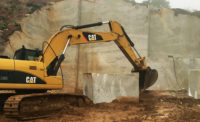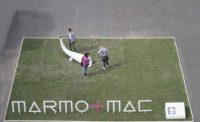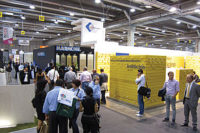
Material from the Calacata Borghini quarry, which is
located in the Apuan Alps of Italy, is now available from the Santucci Group of
Italy,
which recently reached an agreement for the promotion and sales of the marble.
Located in the heart of the Apuan Alps, close to the village of Torano in the Carrara region, the Calacata Borghini quarry is named for Paolo Borghini, who has owned the quarry since 1979. Recently, the historic quarry site began a new chapter, as the Santucci Group reached an agreement for the promotion and sales of Calacata Borghini, which is a world-renowned material.

“We can say with no doubt that this is one of the oldest quarries in Carrara,” said Paolo Borghini. “Some cuts made by the Romans were discovered during the last ‘cleanups,’ and they were donated to the Marble Museum of Carrara.”

The quarry has interior and exterior sections, and it
is equipped with the latest technology.
Stone is extracted from the two separate layers of the quarry. One section is an exterior site, where blocks are extracted using traditional bench quarrying methods, while the other is an underground “gallery.” Both sites are equipped with the latest technology, including Caterpillar loaders and backhoes. These investments were made to produce the best possible blocks, to conserve the environment by minimizing waste and to limit the risks for the quarry workers.

Stone from the Calacata Borghini quarry went through a
natural re-crystallization process that makes it stronger and more durable.
This process also gave the stone its unique color and veining.
Monthly production is about 300 cubic meters, and the standard size of the blocks is 9 x 5 x 5 feet. For special projects, the quarry can also producer larger blocks in custom sizes, depending on the specifications of the job.
“The quarry has produced continuously since it was opened, and based on the last geological tests, there will be no shortage of good material - in quantity and quality,” Borghini said. “Also, since there are deeper layers with bigger ‘fronts,’ we expect to have better material in the future in terms of quality and structure.”

Extraction from the underground gallery is largely
automated, with the operator controlling the machinery by remote control.

Between the two sections, monthly production of
Calacata Borghini marble stands at 300 cubic meters per month.




